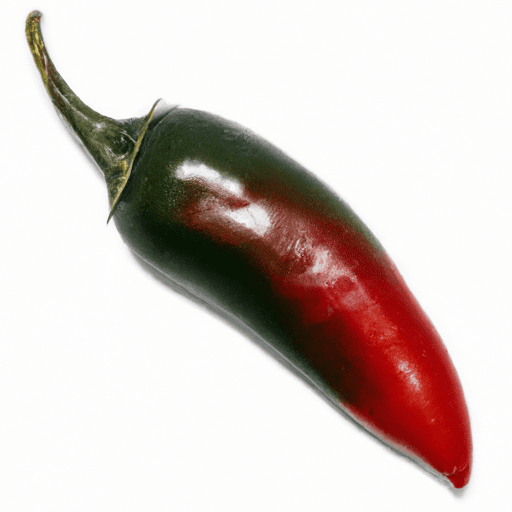The Flavorful World of Ancho Chili
Ancho chili, also known as dried poblano pepper, is an essential ingredient in Mexican cuisine. Whether you enjoy a mild or spicy kick in your dishes, ancho chili brings a delightful combination of flavors that can elevate any recipe. In this blog post, we will explore the taste profile, versatility in cooking, nutritional value, and some interesting facts about this smoky pepper.
Taste Profile
Ancho chili is renowned for its rich, earthy, and fruity flavor. It offers a mild to medium heat with a subtle hint of sweetness. The pepper’s depth of flavor comes from the process of drying ripe poblano peppers, allowing them to develop complex and smoky undertones. The result is a chili with a distinctive taste that enhances various dishes.
Common Uses in Cooking
Ancho chili is a staple in Mexican and Tex-Mex cuisine, providing the backbone for classic dishes like mole sauce and chili con carne. Its versatility extends beyond these traditional recipes, making it a fantastic ingredient to experiment with in your own culinary creations. Here are some popular uses for ancho chili:
- Rehydrated Puree: One common preparation method is rehydrating the dried chili by soaking it in hot water until it softens. Afterward, you can puree it to create a flavorful base for sauces, soups, and marinades.
- Dry Rubs and Marinades: Ground ancho chili pairs exceptionally well with other spices in dry rubs for meats like beef, pork, or chicken. It also adds depth to marinades, imparting a tantalizing smokiness to grilled or roasted dishes.
- Mole Sauce: Ancho chili is a key ingredient in the piquant and complex mole sauces that are a Mexican specialty. The smoky-sweet notes of ancho chili beautifully balance the richness of chocolate and a medley of spices.
- Salsas and Sauces: Ancho chili can be incorporated into fresh salsas, adding a robust flavor and a touch of gentle heat. It can also be included in various sauces to bring depth and character to your dishes.
Nutritional Value
Apart from its flavor-enhancing properties, ancho chili also offers nutritional benefits. It contains essential vitamins and minerals, including vitamin A, vitamin C, and potassium. Moreover, ancho chili provides a small boost of capsaicin, a compound known for its antioxidant and anti-inflammatory properties. Moderate consumption of capsaicin has also been associated with increased metabolism and weight management.
Interesting Facts about Ancho Chili
- Ancho chili is derived from the poblano pepper, which has been cultivated in Mexico for over 1,000 years.
- Ancho chili is considered one of the “holy trinity” of Mexican chilies, alongside guajillo and pasilla peppers. These three chilies are frequently used together to form the base of various Mexican dishes.
- The word “ancho” translates to “wide” in Spanish, describing the flattened appearance of the dried chili.
- In Mexico, ancho chili is commonly used as a flavoring agent for hot chocolate, a delicious and unexpected combination.
Next time you want to add depth and complexity to your dishes, reach for ancho chili and embrace its smoky, fruity flavors. Whether you’re creating a classic Mexican mole sauce, incorporating it into a homemade salsa, or experimenting with dry rubs, ancho chili is sure to delight your taste buds. Enjoy the adventure of exploring this versatile ingredient and let your culinary creations set your taste buds ablaze!
Ancho Chili
Origin: Ancho chili, also known as poblano pepper, is a type of dried chili pepper that originated in Mexico. It is native to the state of Puebla, where it has been cultivated for centuries.
Common Uses: Ancho chili is a staple ingredient in Mexican cuisine and is widely used in various dishes. It is commonly used in sauces, salsas, moles, stews, and marinades. Ancho chili adds a mild heat and earthy flavor to dishes.
Nutritional Benefits: Ancho chili is a good source of vitamins and minerals. It contains significant amounts of vitamin A, vitamin C, and vitamin B6. It also provides dietary fiber and antioxidants. Additionally, ancho chili is low in calories and fat.
Unique Properties: Ancho chili is a dried version of the fresh poblano pepper. It is characterized by its reddish-brown color and wrinkled appearance. The spiciness of ancho chili is relatively mild compared to other types of chili peppers, measuring around 1,000 to 2,000 Scoville heat units (SHU). Ancho chili has a slightly fruity and smoky flavor, which adds depth to dishes.
Historical Significance: The ancho chili has a rich culinary history in Mexican cuisine. It has been used for centuries, and its popularity has spread to other parts of the world. The word “ancho” means “wide” in Spanish, referring to the broad shape of the dried chili. The dried form of the poblano pepper allows it to be preserved and used year-round, contributing to its enduring culinary significance.
Remember to handle ancho chilies with care, as they can cause skin irritation or eye discomfort due to their capsaicin content.




Use the share button below if you liked it.
It makes me smile, when I see it.